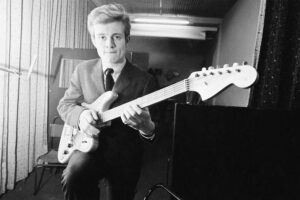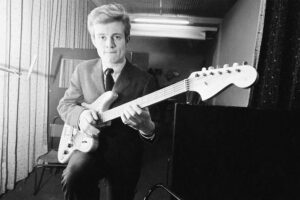John Paul Jones: Led Zeppelin’s Silent Architect
When you think of Led Zeppelin, the mind typically rushes to Robert Plant’s golden wail, Jimmy Page’s electrifying riffs, or John Bonham’s thunderous drums. But behind the curtain of spectacle and sound stood John Paul Jones—a quiet genius, the band’s secret weapon, and perhaps the most underrated member of rock’s greatest quartet.
Jones wasn’t just a bassist. He was the architect of Led Zeppelin’s musical foundation, the orchestrator behind their sweeping soundscapes, and the man who could turn a riff into a movement. Without his contributions, the band might have been loud—but never legendary.
Long before Zeppelin, Jones was already a sought-after session musician and arranger. His fingerprints are on countless recordings from the 1960s, working with the likes of The Rolling Stones, Dusty Springfield, and Donovan. That experience gave him a deep, intuitive understanding of arrangement, harmony, and production—skills that he brought in full force when he joined forces with Page, Plant, and Bonham.

What truly set Jones apart wasn’t just technical proficiency—it was his vision. Take “Kashmir,” for example. That hypnotic, eastern-influenced epic owes as much to Jones’s string arrangements and keyboard work as it does to Page’s iconic riff. On “Trampled Under Foot,” it’s his funky clavinet line that gives the song its heart. From the swirling synths of “No Quarter” to the mandolin work on “Going to California,” Jones injected layers and textures that made Zeppelin more than just a rock band—they became symphonic, cinematic, mythic.
And then there’s his humility. In a group full of flamboyant personalities and on-stage theatrics, Jones was the still center of the storm. He wasn’t chasing headlines. He was chasing perfection—quietly, methodically, and with a sense of musical curiosity that knew no limits. He was as comfortable playing jazz and classical as he was laying down hard rock grooves. That range gave Zeppelin a flexibility and depth that set them apart from their contemporaries.
His role in songwriting often flies under the radar, but it shouldn’t. He co-wrote many of the band’s most intricate tracks, helped shape arrangements, and brought structure to the sprawling creativity of his bandmates. In the studio, he was often the glue holding things together—a calm, collected counterbalance to the wild energies of Page and Bonham.

It’s telling that when Led Zeppelin disbanded after Bonham’s death, Jones didn’t chase solo stardom. He continued to work in the shadows, scoring films, collaborating with a wide array of artists, and exploring the boundaries of sound. He let his work speak for itself—and what it said was clear: talent doesn’t always need a spotlight to shine.
So why isn’t his name mentioned first when people talk about Zeppelin?
Maybe because true geniuses don’t beg for attention. They earn it slowly, with every note, every choice, every moment of restraint and brilliance. Maybe because he never needed to be loud—his work did all the talking.
But ask any musician who’s ever studied Zeppelin’s catalog, and they’ll tell you: Jones was the spine. The secret sauce. The alchemist who could turn heavy riffs into transcendent experiences.
And now, back by popular demand, our tribute to the man behind the music is available again. This one’s for the true fans—for those who know that sometimes the most powerful voices are the quietest ones.
It’s not for everyone—but if it is for you, you already know it.













